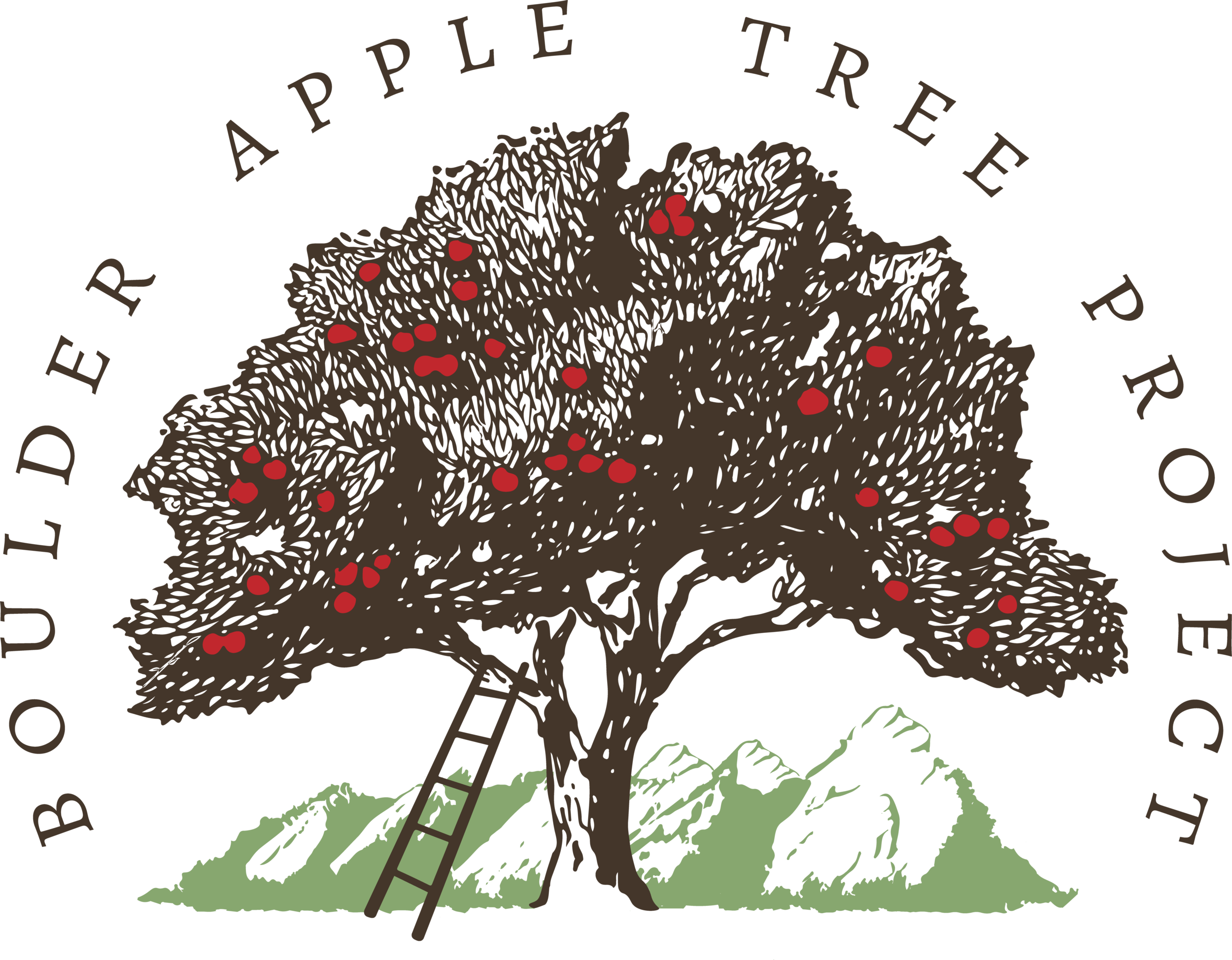DNA Fingerprinting with Boulder apple trees
Many types of apple trees grow in the City of Boulder and its open space parks, ranging from crabapples to old homestead varieties. But, how many different varieties are there, really? Closely related trees may grow up to look different, thanks to differences in their local environments (e.g. water, direct sunlight). On the other hand, trees with different names may look similar; in some of these cases, the trees may be genetically similar or indistiguishable. To make things more complicated, different apple tree varieties can pollinate each other, leading to mixed, or novel, types.
So, how many apple tree varieties exist in Boulder? One of the goals of the Boulder Apple Tree Project (BATP) is to address this question, and this summer we’re making progress on genotyping local apple varieties- that means we are comparing their DNA to a set of previously-known apple trees to determine what type of tree they are. Currently, the BATP has collected DNA from the leaves of over 500 local trees. We are collaborating with the USDA Agricultural Research Service for the genetic analysis and expect to have preliminary results this summer.
What do we expect to find? A similar study was carried out by researchers at the University of Wyoming and USDA, who surveyed apple tree diversity across the state of Wyoming (Magby et al., 2019). Of the trees surveyed by Magby et al., about two-thirds matched varieties in the set of previously-known types. The remaining one-third remain unidentified. Thus, in addition to improving our understanding of the types of apple trees represented in Wyoming, this study highlighted that many apple trees may be rare or undocumented. We find the later point to be particularly interesting, because the undocumented types may potentially be valuable to breeding programs for agriculture or cider, and for studying biodiversity in general.
For a domesticated plant, apple trees have remarkable diversity. This is partly due to the fact that apples are a popular food item, and have been for thousands of years. Humans have purposefully, and accidentally, spread them all over the world. Certain aspects of the biology of apples also promote high diversity. While many crops, e.g. lettuce, peas, and peaches, can self pollinate, apple trees have to be pollinated by other apple trees- even different apple tree varieties. This leads to all kinds of mixed varieties that are not maintained by orchards.
Regarding the technical details of our study, we are using a strategy called DNA fingerprinting with short sequence repeats (SSR). This technology is outdated or obsolete in medical research and population genetics, but is still useful for some applications such as forensics, and apples! SSRs are sort of just what they sound like: repetitive DNA consisting of short bits that are repeated over and over many times. This type of marker can be particularly useful, because the DNA replication machinery in our cells tends to make mistakes easily when reading them, sometimes adding on one or more repeats, or missing a repeat. At the population level, this leads to many different variations of the same SSR. For example, if we zoom in on a hypothetical SSR in apples, lengths of 9, 10, 13, 15, and 19 repeats might be encountered. With such large variation per marker, we only have to look at nine SSRs to distinguish among all apple varieties currently documented with the USDA. However, with so much local apple tree variation, we may discover that more markers, or more sophisticated DNA sequencing approaches, are required to truly understand genetic variation among apple trees cultivars and mixed-varieties.
References
Magby, J., Volk, G. M., Henk, A., & Miller, S. (2019). Identification of Historic Homestead and Orchard Apple Cultivars in Wyoming. HortScience, 54(1), 8-16.

